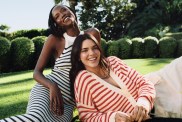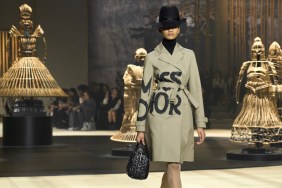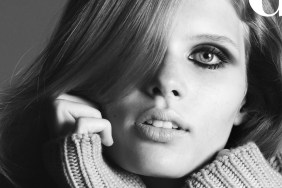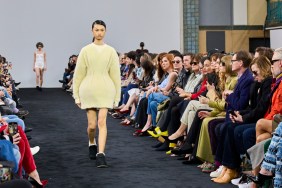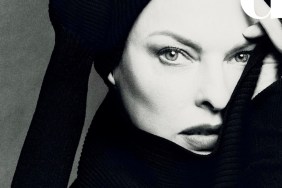In the UK, where “ginger” used to be a dirty word, Elly Jackson – street name La Roux – is an unlikely chart topper and even wonkier style heroine. But in 2009, a music year defined by dance curiosities like Ladyhawke, Florence & The Machine, and Little Boots, La Roux have become Britain’s leading pop scions. Note the plural: though to most, Elly and La Roux are synonymous, they are in fact a duo. But to call Elly its definitive half is putting it mildly: she not only characterizes the La Roux mystique, her infamous red hair provided its namesake.

It’s her searing Nintendo pop narratives and “I don’t smile–ever” photo policy that’s made her a moody media magnet. And it’s her dynamic brand of Technicolor power dressing that’s turning heads from High Street to House of Holland. With killer tunes and a wardrobe to match, La Roux is postmodern pop’s coolest poster child.


“In The For The Kill”, directed by Kinga Burza.
La Roux’s take-no-prisoners aesthetic agenda announces itself stridently. It’s bold, it’s brash, and it challenges populist conventions, making its unexpected mainstream acceptance that much more rewarding to behold. She may not epitomize orthodox beauty, but La Roux’s appeal is specific and stems from her shrewd self-sufficiency. Already, she’s identified and capitalized upon her assets: a fashion-friendly wiry frame, pleasingly inscrutable facial features, and a stately, blazing red coiff — likely, Britain’s most notorious plumage since Mike Score’s trademark ‘wings’ of the 80s. Like fellow self-styled pop eccentric Lady Gaga, La Roux has built a quirky visual myth. But where GaGa’s stock in trade is glitter shock sex appeal and Warholian irony, La Roux’s equally colorful, yet unisexual image serves as its antithesis.

Her androgynous, alpha female image sits well with fashion folk, who thrive on exclusivity and have a tradition of adopting strangely beautiful redheads – think Shirley Manson’s haute tomboy makeover in 2001, or Iris Strubegger’s fire-engine crop and subsequent meteoric rise in 2009. Sometimes, it’s the tall, gawky, awkward “gingers” we fall for the hardest. But it’s not just the UK fashion press that’s crushing hard on La Roux. As eschewing a traditional female image is wont to do, lesbian rumors abound, but it turns out plenty of straight girls and guys find La Roux enticing, too.

“Do guys like La Roux?” I asked a photographer friend who had recently shot an editorial with Jackson. “Yes, because she’s awesome,” he responded. “She’s fearless, strong, and she is actually quite pretty up close, like Annie Lennox”. Still, La Roux isn’t about to be called a sex kitten. “I know there’s far more ways to be sexy than to dress in a miniskirt and a tank top,” she has lamented. “If you’re a real woman, you can turn someone on in a plastic bag just by looking at them”.

If anything, her role of choice is that of the lone, stony-eyed tigress. In her Kinga Burza-helmed debut video, “Quicksand”, she’s every bit the feline queen, clad in Margiela, Henry Holland, Ksubi, and custom pantherine designs by her stylist, London designer Nova Dando.

“Quicksand” by Kinga Burza
Dando and her frequent collaborator, makeup artist Liz Martins, mastermind key elements of the La Roux mystique. Together, they have quickly honed the singer’s public image, dressing her in fashion-forward designs by innovators as distinct as fellow 80’s enthusiast Thierry Mugler to fanciful Brit Eley Kishimoto. In the high-octane Gullame Marien-directed clip for pugilistic pop anthem “Bulletproof”, Elly puts on a gonzo fashion show and masters the sharp-shouldered blazer look. In a Dando-designed zebra-patterned jacket and color-blocked number by Jean-Charles de Castelbajac, she instantly launches a new breed of fashion icon.

Sorry, Kylie: while you were camping it up with William Baker, a cooler ice queen arrived on the pop scene. And long may she reign.

“Bulletproof” by Gullame Marien




